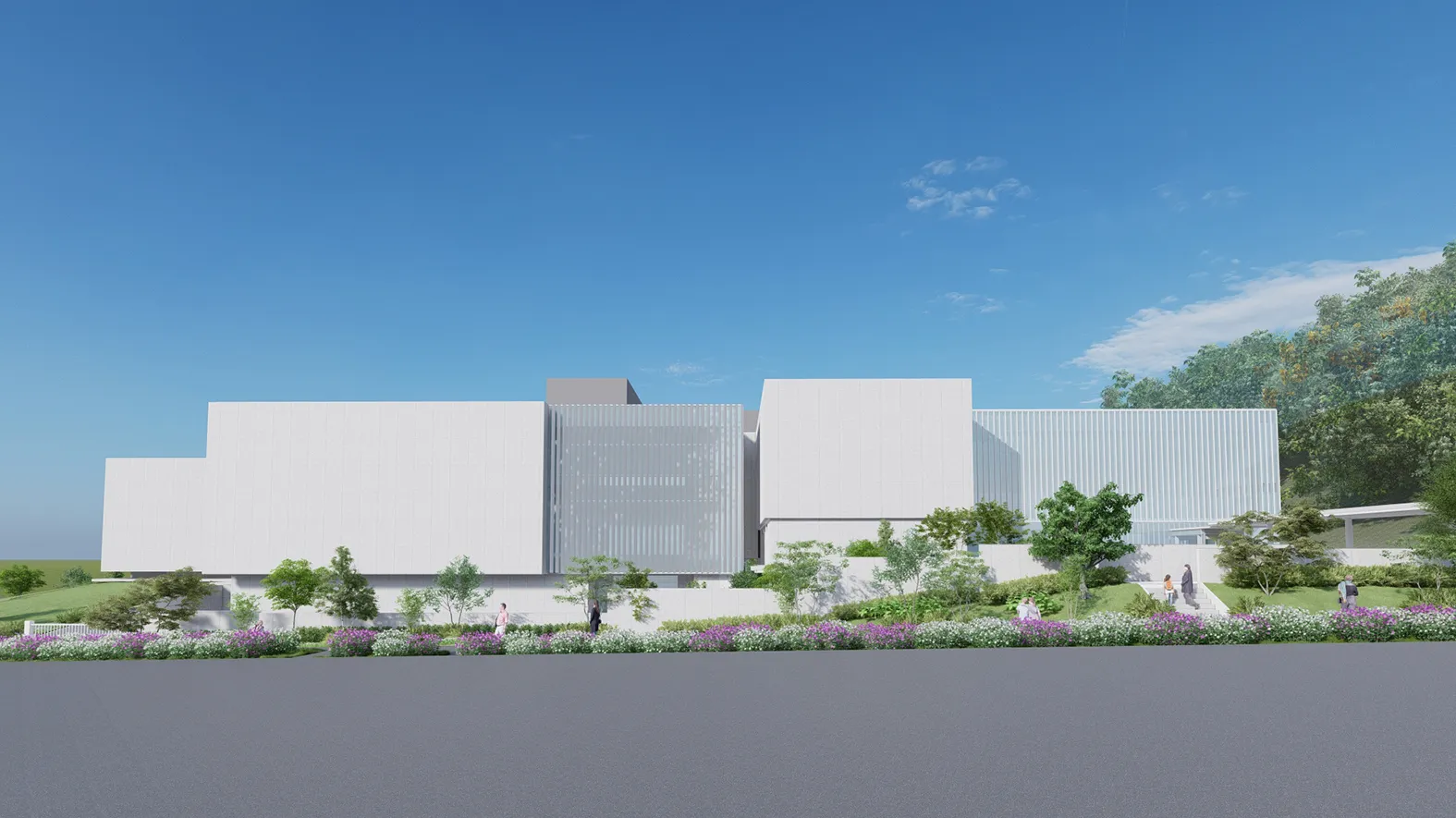Protection
Cultural Properties ProtectionIshibashi Foundation Art Research Center
Planning for the Ishibashi Foundation Art Research Center (ARC) began when the Bridgestone Museum of Art (currently the Artizon Museum) was closed for new construction, and artworks needed to be moved and stored. The ARC completed in Machida City, Tokyo, in 2015.
Having storage rooms in a different location from the museum also allows us to mitigate risks in the event of a disaster. The ARC also has not only storage rooms, but also a variety of other functions, including research, and related facilities, and functions in a comprehensive manner in cooperation with the Artizon Museum.

Hall
The Ishibashi Foundation values its contribution to the local community. In the multi-purpose hall on the first floor, children's workshops, art lectures for adults, and more are held as learning programs in cooperation with nearby educational institutions. It has wood floors for casual seating and a free space for up to 50 seats with desks and chairs, with the latest audio-visual features.

Library
The library on the second-floor stores books owned by the Ishibashi Foundation. It is mainly related to the field of the artwork of the Ishibashi Foundation Collection, and in particular, it has an extensive collection of books and exhibition catalogs related to French Impressionism and modern Japanese Western-style paintings. In addition to being used by curators for research, the library is also open to researchers (advance reservation required).

Storage Rooms
It stores a diverse range of artwork owned by the Ishibashi Foundation. Framed oil paintings, antique art, paper works using watercolors and prints, etc., and three-dimensional works made of bronze and stone, etc. are stored in multiple storage rooms with different specifications depending on the material and artistic field of the works. Each storage room has a double-nested structure to improve air conditioning performance.


Conservation Room
This is a place where restoration work of artworks owned by the Ishibashi Foundation is carried out, and it is fully equipped with chemicals, art supplies, and tools necessary for restoration work. A large, chemically resistant table, movable exhaust ducts to remove volatile solvent fumes, a microscope to see the details of the painting's surface, and other equipment unique to a conservation room are all available.

Security & Sustainability
The ARC is designed to protect people and buildings from natural disasters and hazards, and to our activities ongoing. The building’s dampening systems have been adopted to minimize damage from earthquakes. A solar energy system has been installed on the rooftop to cover part of the power consumption. In addition, we have introduced a state-of-the-art security system to take all possible measures against unforeseen circumstances such as fires.



About the Extension of the Art Research Center
The Ishibashi Foundation Art Research Center anticipates an increase in the number of artworks under its care in the future, and is currently constructing a new storage facility with the goal of opening it at an adjacent area in the autumn of 2025. Through this, we aim to solve the issue of sustainable conservation of artworks, and to build an infrastructure to ensure ongoing museum activities including research by aggregating books and materials. We will also introduce a solar energy system in the extension to further promote environmental considerations.

